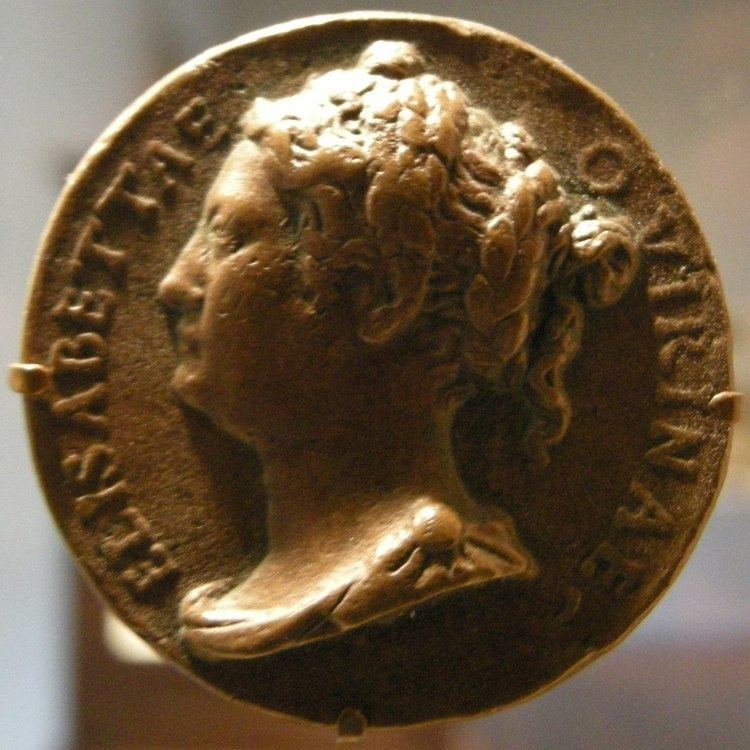 | ||
Dogaressa was the official title of the spouse of the Doge of Venice.
Contents
History
The position of the dogaressa was regulated by the laws of the republic, which specified which duties and rights she had, and what was prohibited for the title holder. These rights changed several times during the history of the republic. The first bearer of the title was reportedly dogaressa Carola in the 800s, and the last was Elisabetta Grimani in the 1790s.
Position
Just like the Doge, the dogaressa crowned, made a Solemn Entry, and gave a vow of loyalty to the republic upon her coronation. The symbols of her rank was a golden veil and a crown in a similar shape as that of the doge. Similar to a queen, the dogaressa was provided with a household of ladies-in-waiting. The coronation of the dogaressa was abolished during certain periods.
Formally, the dogaressa had not political rights whatsoever, and her task was to participate in the representational life of the republic and official ceremonies and rituals designed to personify the glory of the state, and had as such a very visible public role. She was expected to act as the formal protector of certain guilds and trades, and could as such play in important part in the role of this trades within the state, something several dogaressa's is known to have done. Alicia Giustiniani, for example, played an important part in Venetian commerce business because of this role. Though law refused any influence over stat affairs from the dogaressa, there were dogaressa's who wielded a great deal of influence over the affairs of state in practice, notably Felicia Cornaro.
When the dogaressa became a widow, she was socially expected to become a nun. However, there was no actual law to require this, and some widowed dogaressa's refused to follow this custom, though it was considered scandalous.
Changes in position
During the centuries, the regulations around the dogaressa introduced laws to restrict her rights: in the 13th-century, the dogaressa was banned from receiving dignitaries and make public donations on her own, and in 1342, a law banned her from conducting business affairs of her own.
The coronation ceremony of the dogaressa did not occur between that of Taddea Michiel in 1478 and Zilia Dandolo in 1556; after the coronation of Morosina Morosini in 1597, the coronation of a dogaressa was deemed unnecessary in 1645 and the other ceremonies around her suppressed to a minimum. The last dogaressa to be crowned was Elisabetta Querini in 1694, after which the ceremony was permanently abolished. After the tenure of Elisabetta Querini, most other ceremonial privileges of the dogaressa was abolished as well: in 1700, she was refused to wear a crown and receive gifts from dignitaries. In 1763, the Solemn Entry was revived by the wish of the Doge for Pisana Conaro, who were the last dogaressa to perform it.
